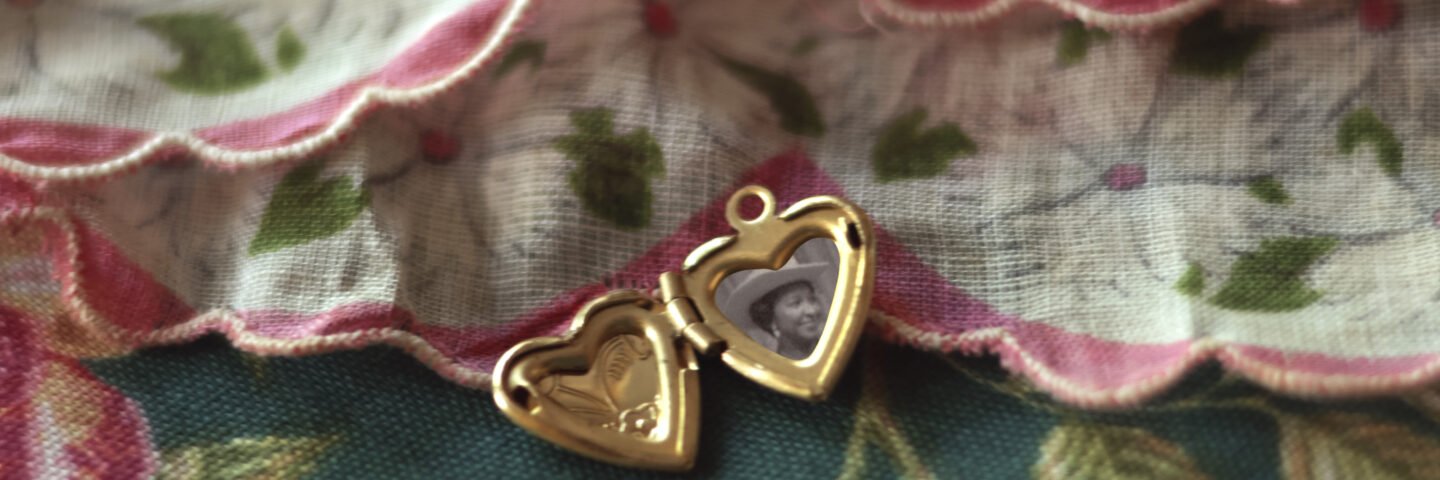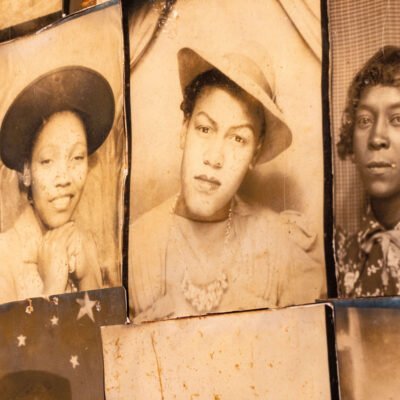

Irene Antonia Diane Reece
“Grief is evidence of love, it is also a way of honoring our commitment to those who have died.” – bell hooks
Don’t Cry For Me When I’m Gone is a photographic installation featuring Black Southern archives which elicit memories as well as feelings of grief and kinship in the artist and potentially the viewers themselves. Artist Irene Antonia Diane Reece’s embrace of these archives comes with feelings of heaviness and joy, prompting love and grief interchangeably.
While the work is grounded in photography, the addition of Black and family archives adds depth to it – layering not only text, but a sense of comfort and belonging. For Reece, making this work is a vulnerable process. With every piece, she reveals an array of emotions, inviting the viewer to connect to a feeling or memory; whether grief, self-love, trauma, or hope. This spiritual ritual of caring for and acknowledging archival documents is an act of preservation and healing.
With this new body of work, Reece hopes to spark self-reflection and curiosity. By sharing her own story and heritage, she encourages viewers to uncover, understand, and remember as a way to heal, dream, and live. Don’t Cry For Me When I’m Gone is a reminder to care deeply – for community and for oneself.
–
No llores por mí cuando ya no esté
“El duelo es evidencia del amor; también es una forma de honrar nuestro compromiso con quienes han muerto.” – bell hooks
No llores por mí cuando ya no esté es una instalación fotográfica que presenta archivos, desde la perspectiva de la comunidad negra del Sur estadounidense, que evocan recuerdos, así como sentimientos de duelo y hermandad, tanto en la artista como potencialmente en los propios espectadores. La relación de la artista Irene Antonia Diane Reece con estos archivos está impregnada de sensaciones de pesadez y alegría, incitando el amor y el duelo de manera intercambiable.
Aunque la obra se fundamenta en la fotografía, la incorporación de archivos familiares afrodescendientes le otorga mayor profundidad, sumando no solo texto, sino también una sensación de confort y pertenencia. Para Reece, crear esta obra es un proceso de vulnerabilidad. Cada pieza revela una gama de emociones, invitando al espectador a conectar con un sentimiento o un recuerdo, ya sea duelo, amor propio, trauma o esperanza. Este ritual espiritual de cuidar y reconocer estos archivos es un acto de preservación y sanación.
Con este nuevo cuerpo de trabajo, Reece espera despertar la autorreflexión y la curiosidad del espectador. Al compartir su propia historia y herencia, alienta a los espectadores a descubrir, comprender y recordar como una forma de sanar, soñar y vivir. No llores por mí cuando ya no esté es un recordatorio de proteger cuidadosamente a nuestra comunidad y a nosotros mismos.
About the Artist
Irene Antonia Diane Reece creates image-based, multimedia installations that engage viewers in conversations about racial identity, African diaspora, social injustice, family histories, re-memory, mental and community health. While lens-based, Reece’s work has become increasingly critical of the very tools she uses as she seeks to decentralize whiteness, engage/deconstruct the violence of the camera, protect Black archives, and centralize/celebrate the complexities of Black identities.







